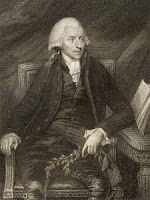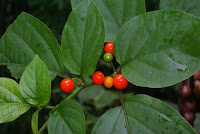William Withering and the foxglove
This month's library items of the month, selected by the RCPI librarian, is William Withering's An account of the foxglove, and some of its medical uses: with practical remarks on dropsy, and other diseases. (Birmingham, 1785).
The use of plants in medicinal preparations has a history as long as that of medicine itself. Galen listed over 300 herbal medicines in the first century AD and the cultivation of plants for medical use in special gardens has been practised since ancient times. In the 17th and 18th centuries, most of the important teaching centres in Europe had botanic gardens attached. Indeed, in the latter years of the 18th century, the College of Physicians in Ireland was rocked by a major controversy over whether the income from Sir Patrick Dun's estate should be used to create a botanic garden or to establish a clinical hospital. Despite the vigorous championing of the garden by Dr. Edward Hill, one of the College's finest Librarians, the College eventually decided in favour of the hospital. For more details of this dispute click here.
 |
| William Withering |
William Withering (1741-1799) was recognised as the greatest English medical botanist of his time. He was born in Wellington, Shropshire, and graduated in medicine from the University of Edinburgh in 1765, before going on to be appointed physician to Birmingham General Hospital. He was interested in botany from an early age and had his own botanical garden. In 1776, he published The botanical arrangement of all the vegetables naturally growing in Great Britain, one of the earliest and most influential British floras.
The foxglove plant, digitalis purpurea, had been known for centuries as a folk remedy and its use in the treatment of dropsy, or congestive heart failure, and other conditions, had been recognised since the 16th century.
Withering seems to have first learnt of the value of digitalis in the 1770s, and for the next ten years, he carefully tried out different preparations of various parts of the plant until he had determined the most effective and safest way of using it. Finally, in 1785, he published his classic work An account of the foxglove, and some of its medical uses: with practical remarks on dropsy, and other diseases.
 |
| Illustration of a foxglove from Withering's work |
The work made Withering's reputation and he was acclaimed throughout Europe as "The English Linnaeus". He was elected to numerous learned societies in England and abroad. The plant Witheringia Solanacea (a Central American shrub with antidiabetic properties) was named after him, as is a Chair of Medicine and an annual lecture at the University of Birmingham Medical School. He has also achieved the unusual distinction for a doctor of having a pub named after him, The William Withering in his birthplace at Wellington in Shropshire.
Robert Mills, RCPI Librarian
 |
| Witheringia Solanacea |